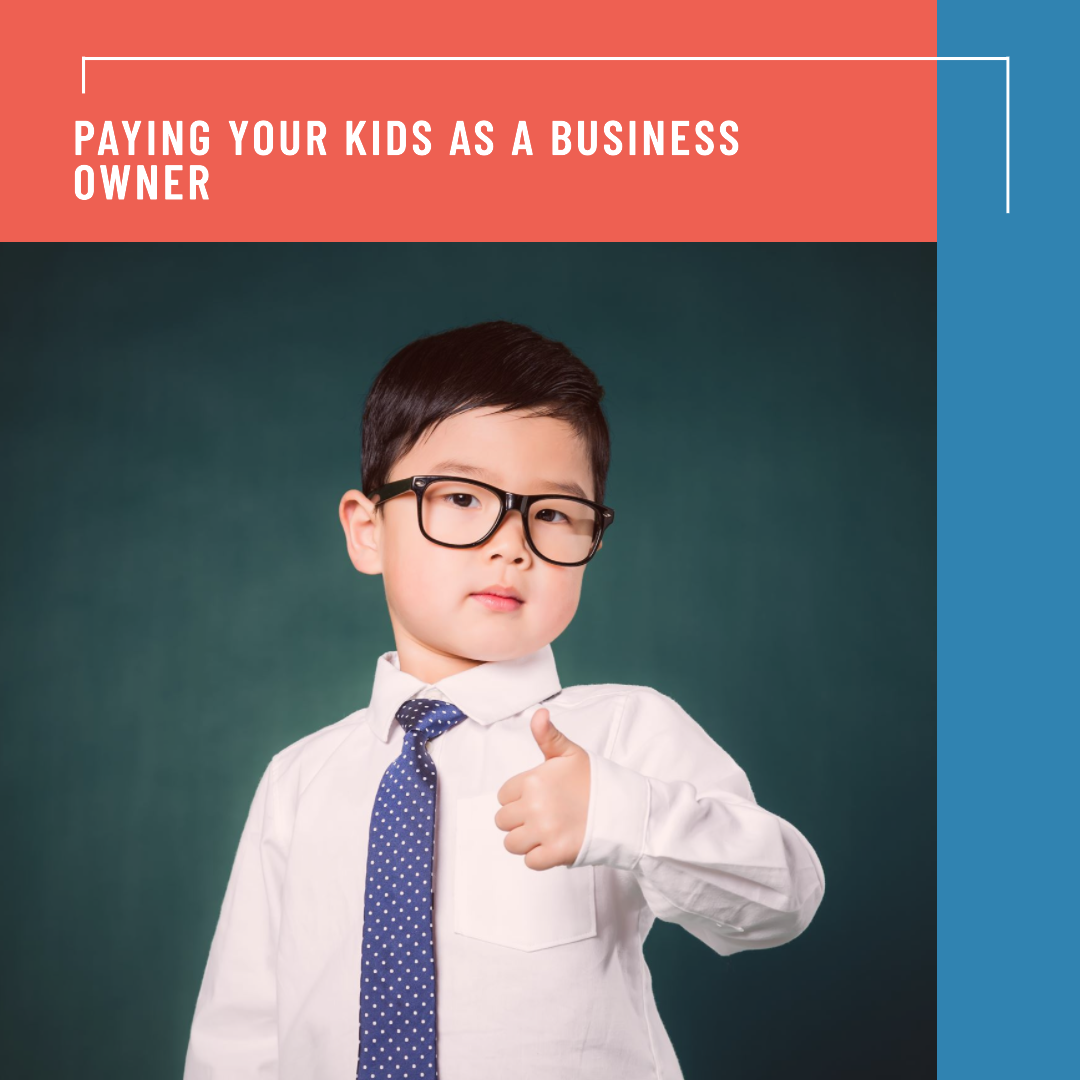
PAYING YOUR KIDS AS A BUSINESS OWNER
Paying your children may be one of the most underutilized tax strategies of small businesses owners. Yes, you can hire your children to work for you, and you’re able to pay them a legitimate wage. There are multiple planning opportunities that become available to you by implementing this into your business plan. We’ve laid out a few below:
Let’s talk basics. If there are tasks around the office needed to be done that either you do, or you pay someone else to do, and these tasks could be performed by your children, and your children legitimately take on responsibility for completing these tasks, you can pay them for services rendered. Examples of such tasks are cleaning the office, simple data entry, updating social media, distributing handouts at marketing events, modeling for office photos, yard work, etc. You will need to add them to the payroll as you would any other employee. This, along with documenting their responsibilities, will ensure the legitimacy of paying them, especially when it comes to further planning opportunities that become available to you as a result of paying them. Wages paid to your kids are included in total wages paid to all employees reflected on your business tax return, decreasing your tax liability.
How your entity is taxed will determine how the wages are taxed. This is important as it provides preferential treatment to certain entity structures. If you are the sole owner of your business and do not have it formed separately from you, such as an LLC, then you are classified as a sole proprietorship (i.e., you are your entity, and your entity is you as there is no legal distinction between the two). Or, if you are an LLC and have not made the S-Election requesting to be taxed as an S-Corp, then your business is considered a “disregarded entity” in the eyes of the IRS and is then also reported on Schedule C of your individual 1040. This essentially means your business does not file its own tax return.
If either of these apply to you, then any wages paid to minor children of the business owner are not subject to payroll taxes. What does this mean? W-2 employees and their employer incur payroll taxes of 7.65% each whenever employee wages are paid. This rate is made up of 6.2% in social security taxes and 1.45% in Medicare taxes. So, let’s say your employee, Kim, offers to clean the office every week and take care of the yard work every two weeks for an agreed upon wage of $6,500 for the year. You would add the $6,500 to their other wages and would also have to pay payroll taxes of $403 in social security taxes and $94 in Medicare taxes on the additional wage. That same amount would also be taken out of Kim’s check for payroll taxes.
Now, let’s say you decided to instead hire your child to clean the office and mow the lawn for the same $6,500 you were going to pay Kim. You would run wages paid to your child for $6,500 with no payroll taxes being assessed, and your child would earn the $6,500 without having payroll taxes withheld. This provides payroll tax savings of $995 between the two of you. Now, let’s add to the scenario and also say you were in the 22% income tax bracket that year. Since the $6,500 is a business deduction, this decreases your income taxes by $1,430. So, in total, this strategy provides $2,425 in tax savings between the payroll taxes and income taxes. Also, since the $6,500 is below the standard deduction in the current year, your child pays no income taxes on this earned income. This is huge! The same tax treatment is available to partnerships where both partners are parents of the child.
For entities that file their own tax returns separate from the owners’ individual return, (Corporations and S-Corporations) then you and your child would still owe the payroll tax portion, but you would receive a deduction for the wages plus the payroll taxes incurred for paying your child. Using the same criteria as above, the total deduction on your business would be $6,997 made up of $6,500 in wages and $497 in payroll taxes. At a 22% income tax rate, this equals income tax savings of $1,539. This amount less the $497 in payroll taxes your child would incur by being paid, still provides net income tax savings of $1,042 for you.
Ability for your child to contribute to a Roth IRA. One requirement to be eligible to contribute to an IRA is you must have earned income (i.e., wages or 1099-MISC income; passive (investment) income does not qualify as earned income). If you pay your children from your business for work performed, they now have earned income and can contribute to an IRA for that tax year. The big planning opportunity here is not only being able to contribute to an IRA where most people cannot do so until they graduate high school or even college, but also strategically contributing to a Roth IRA. This is because a Roth IRA grows and compounds tax-free. And, if the amount paid to your child was under the standard deduction in that tax year, then that contribution was made with tax–free money (i.e., income taxes were never paid on this income). Having savings growing for them at such a young age is so advantageous and can be used for multiple purposes – tuition and education payments, downpayment towards first home purchase, and if neither of those, it can be a jump start on retirement. Tax-free growth is a powerful strategy and will provide flexibility distribution planning throughout your child’s retirement. The beautiful part about this strategy is how long the money as to grow with it being contributed at such a young age.
In a nutshell. So, essentially, you hire your child in your business and strategically pay them a wage equal to or less than the current year standard deduction (portion of income not subject to income taxes for every individual taxpayer in that year). This decreases the amount you will owe in taxes on income generated from your business, and your child will not incur any income taxes, because their income was less than the standard deduction. You would then open a Roth IRA for your child and contribute for their benefit the wages paid to them, up to the annual max ($6,500 for 2023) to get them started on tax-free retirement growth.
As always, please consult with a tax professional before implementing tax strategies.





